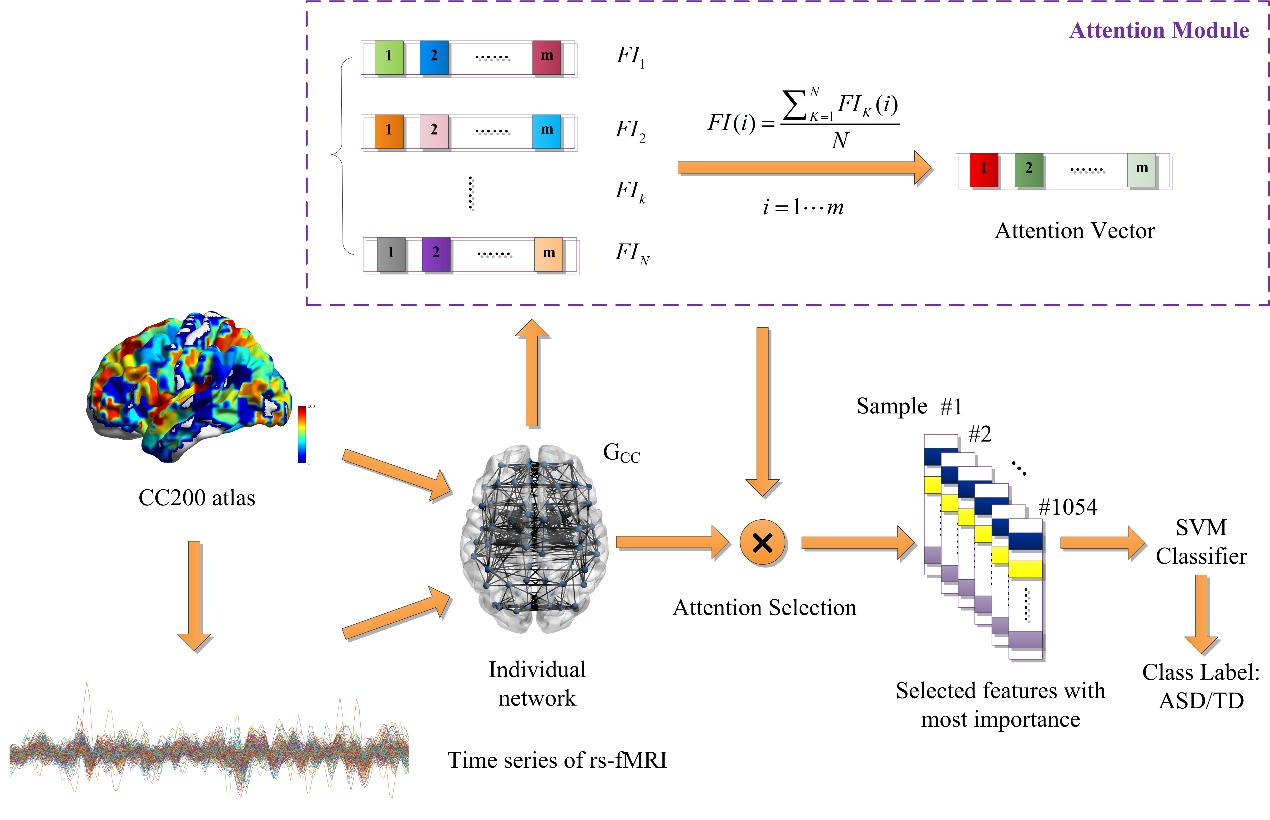Articles
Article Tools
Stats or Metrics
Article
Original Article
Exp Neurobiol 2020; 29(1): 27-37
Published online February 7, 2020
https://doi.org/10.5607/en.2020.29.1.27
© The Korean Society for Brain and Neural Sciences
Attentional Connectivity-based Prediction of Autism Using Heterogeneous rs-fMRI Data from CC200 Atlas
Yaya Liu1, Lingyu Xu1*, Jun Li2*, Jie Yu1 and Xuan Yu1
1School of Computer Engineering and Science, Shanghai University, Shanghai 200072, 2South China Academy of Advanced Optoelectronics, South China Normal University, Guangzhou 510006, China
Correspondence to: *To whom correspondence should be addressed.
Lingyu Xu, TEL: 86-132-6266-9978, FAX: 86-21-6613-5273
e-mail: frht_sh@163.com
Jun Li, TEL: 86-180-1170-2622, FAX: 86-20-8521-3484
e-mail: jun.li@coer-scnu.org
This is an Open Access article distributed under the terms of the Creative Commons Attribution Non-Commercial License
(http://creativecommons.org/licenses/by-nc/4.0) which permits unrestricted non-commercial use, distribution, and
reproduction in any medium, provided the original work is properly cited.
Abstract
Autism spectrum disorder (ASD) is a developmental syndrome characterized by obvious drawbacks in sociality and communication. It has crucial significance to exactly discern the individuals with ASD and typical controls (TC). Previous imaging studies on ASD/TC identification have made remarkable progress in the exploration of objective as well as crucial biomarkers associated with ASD. However, glaring deficiency is manifested by the investigation on solely homogeneous and small datasets. Thus, we attempted to unveil some replicable and robust neural patterns of autism using a heterogeneous multi-site brain imaging dataset from ABIDE (Autism Brain Imaging Data Exchange). Experiments were carried out with an attention mechanism based on Extra-Trees algorithm, taking the study object of brain connectivity measured with the resting-state functional magnetic resonance imaging (fMRI) data of CC200 atlas. With cross-validation strategy, our proposed method resulted in a mean classification accuracy of 72.2% (sensitivity=68.6%, specificity=75.4%). It raised the precision of ASD prediction by about 2% and specificity by 3.2% in comparison with the most competitive reported effort. Connectivity analysis on the optimal model highlighted informative regions strongly involved in the social cognition as well as interaction, and manifested lower correlation between the anterior and posterior default mode network (DMN) in autistic individuals than controls. This observation is concordant with previous studies, which enables our proposed method to effectively identify the individuals with risk of ASD.
Graphical Abstract

Keywords: Autism spectrum disorder (ASD), Classification, Autism Brain Imaging Data Exchange (ABIDE), Functional magnetic resonance imaging (fMRI), Default mode network (DMN)


